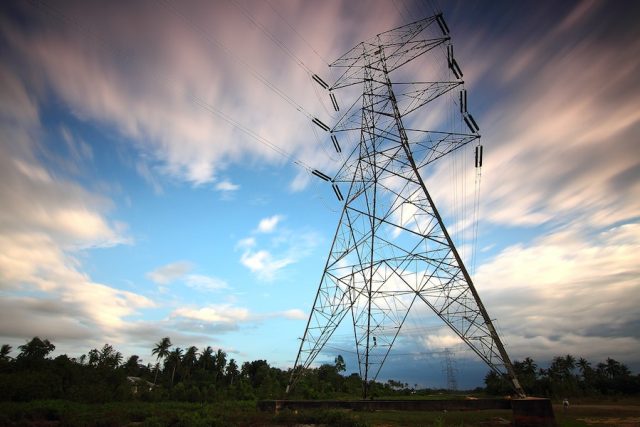As energy costs continue to soar and environmental concerns loom large, it has become crucial for businesses to assess and optimize their energy usage proactively. An energy audit is vital to identifying inefficiencies, reducing wastage, and maximizing energy consumption. Business owners can bolster their financial health and minimize their ecological impact by delving into energy usage patterns and implementing energy-saving measures like the ones provided by companies such as Impact Energy.
Understanding The Essence Of An Energy Audit
An energy audit systematically evaluates a business’s energy consumption patterns, infrastructure, and processes. This comprehensive assessment encompasses diverse areas such as lighting, HVAC systems, insulation, equipment, and appliances. The primary goal of an energy audit is to pinpoint areas where energy is being squandered or utilized inefficiently, enabling recommendations for improvement.
Unveiling The Importance Of Energy Audits
Energy audits hold substantial importance for business owners for several reasons. Firstly, they unearth energy-saving opportunities that substantially reduce costs in the long run. Secondly, energy audits contribute to environmental sustainability by curbing carbon emissions and conserving precious natural resources. Additionally, energy audits enable businesses to adhere to energy efficiency regulations and showcase their commitment to corporate social responsibility.
Embarking On The Energy Audit Journey
Conducting an energy audit entails a series of crucial steps that, when executed systematically, ensure a comprehensive evaluation of energy usage.
Preparing for the audit
Before commencing the audit, gathering pertinent information on the business’s energy usage is essential. It encompasses utility bills, building blueprints, equipment specifications, and historical energy data. Additionally, establishing clear objectives and defining the scope of the audit is paramount.
On-site assessment
The on-site assessment entails a meticulous inspection of the business premises to identify energy consumption patterns and potential areas for improvement. It involves scrutinizing lighting systems, HVAC equipment, insulation, windows, and doors. Energy auditors may employ specialized tools and equipment to measure energy usage and identify inefficiencies.
Data collection and analysis
During this phase, energy auditors collect and analyze data related to energy consumption. It includes scrutinizing utility bills, conducting energy metering, and analyzing equipment performance. Advanced software and data analysis techniques are deployed to discern trends, anomalies, and improvement opportunities.
Spotting energy efficiency opportunities
Based on the data analysis, energy auditors identify specific energy efficiency opportunities tailored to the business’s unique needs and goals. These may encompass recommendations for upgrading lighting systems, optimizing HVAC settings, improving insulation, replacing outdated equipment, or integrating renewable energy solutions.
Developing an action plan
The energy audit concludes with the development of a comprehensive action plan. This plan outlines recommended energy efficiency measures, associated costs, potential savings, and implementation timelines. It serves as a roadmap for the business to prioritize and execute the identified opportunities effectively.
Implementing Energy Efficiency Measures
Once the action plan is in place, the business can embark on implementing the recommended energy efficiency measures. Here are some common strategies:
Upgrading lighting systems
Substituting traditional incandescent bulbs with energy-efficient LED lighting can yield significant energy savings. LED lights not only boast higher efficiency but also possess a longer lifespan, thereby reducing maintenance costs.
Optimizing Heating, Ventilation, and Air Conditioning (HVAC) systems
HVAC systems typically account for a considerable portion of a business’s energy consumption. Businesses can achieve substantial energy savings without compromising comfort by optimizing HVAC settings, scheduling regular maintenance, and upgrading to energy-efficient models.
Enhancing insulation and sealing
Effective insulation and airtight sealing of buildings contribute to maintaining a comfortable indoor environment while minimizing energy waste. Businesses can mitigate heat transfer and enhance energy efficiency by identifying and sealing air leaks, adding insulation to walls and roofs, and optimizing windows and doors.
Utilizing energy-efficient equipment and appliances
Replacing outdated equipment and appliances with energy-efficient alternatives can yield significant energy savings. Energy Star-certified products, for instance, meet stringent energy efficiency standards and assist businesses in curbing their energy consumption.
Embracing renewable energy sources
Integration of renewable energy sources such as solar panels or wind turbines offers businesses access to clean and sustainable power. These solutions reduce energy costs and cultivate a greener image and environmental stewardship.
Monitoring And Continuous Improvement
Conducting an energy audit is not a one-off endeavor but an ongoing process. Businesses should establish monitoring systems and continually evaluate their energy consumption. Here are key considerations:
Tracking energy consumption
Installation of energy meters and utilization of energy management software empower businesses to monitor and analyze their energy usage in real time. It enables the identification of deviations, tracking progress, and data-driven decision-making for further improvement.
Employee engagement and training
Employees play a pivotal role in energy conservation. Educating and engaging employees through training programs and awareness campaigns fosters a culture of energy efficiency within the organization. Simple practices such as turning off lights and equipment when not in use can make a significant difference.
Regular maintenance and performance checks
Routine maintenance and performance checks are vital to ensuring that energy-efficient systems operate optimally. Regular inspections, filter replacements, and equipment tune-ups uphold peak performance, ward off energy waste, and enhance longevity.
The Bounty Of Conducting An Energy Audit
Conducting an energy audit offers numerous benefits for businesses:
Cost savings
Businesses can substantially reduce their energy costs by identifying and implementing energy-saving measures. The resulting savings from decreased energy consumption bolster the bottom line and enhance overall profitability.
Environmental impact
Energy audits and subsequent energy-saving measures contribute to environmental sustainability. By curtailing energy consumption and carbon emissions, businesses actively minimize their ecological footprint and contribute to a healthier planet.
Improved operational efficiency
Energy-efficient systems often translate into improved operational efficiency. Upgraded equipment and optimized processes foster enhanced productivity, reduced downtime, and improved overall business performance.
Enhanced reputation and stakeholder engagement
Demonstrating a commitment to energy efficiency and sustainability augments a business’s reputation, attracting environmentally conscious customers and stakeholders. It showcases corporate social responsibility and positions the business as an industry leader.
Conclusion
Conducting an energy audit is a proactive stride that business owners can take to evaluate their energy usage and unveil avenues for improvement. By implementing energy-saving measures, businesses can lower costs, bolster operational efficiency, and contribute to a sustainable future. Embracing energy efficiency benefits the bottom line and showcases a steadfast dedication to environmental responsibility.














